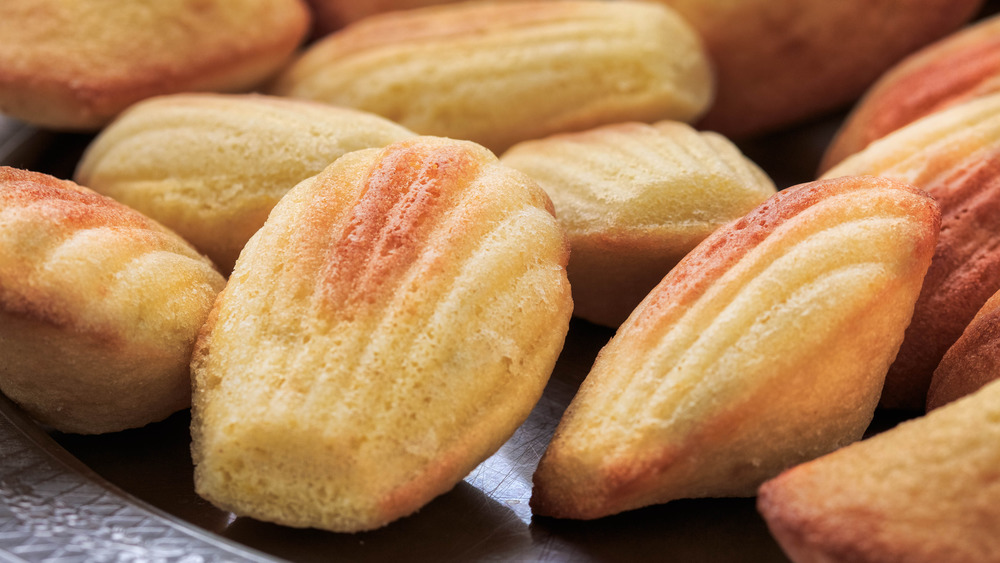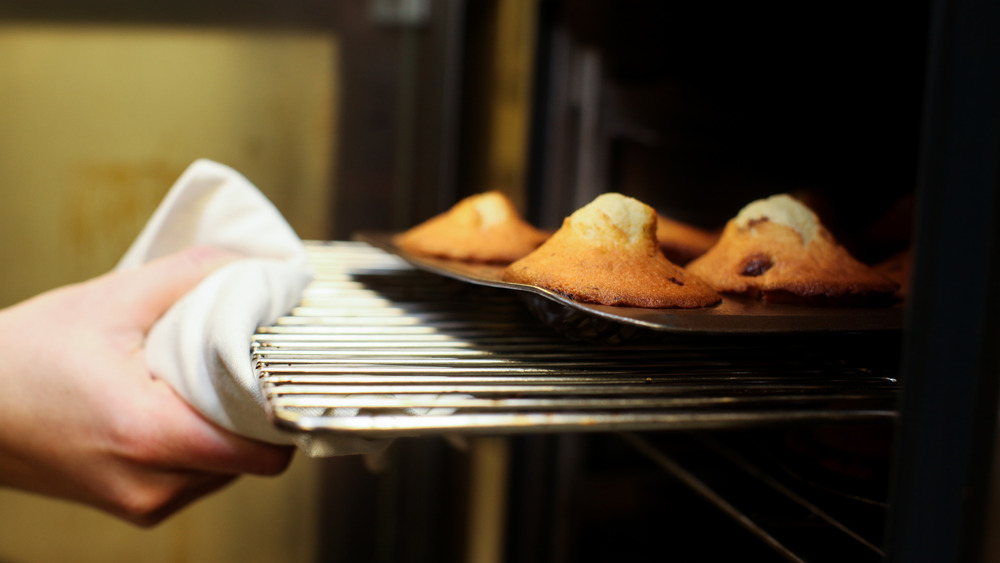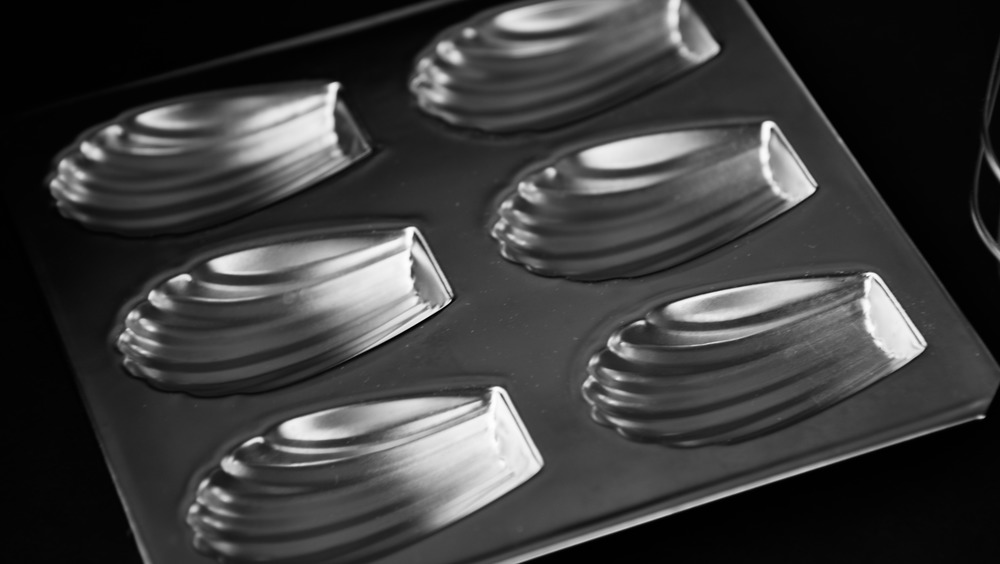Do You Really Need A Special Pan To Make Madeleines?
Does the cookware make the cook, or the cook make the cookware? In a time when cooking and baking "hacks" are widely available (just check out this extensive list from Taste of Home), the necessity of certain specialized equipment — and specialized knowledge — is increasingly up for debate. Caught short without an ice-cube tray? Try using a leftover egg carton. Don't have the right knife for cutting prefect steak fries? Just put that apple slicer to work.
But are there any foods that are off limits from the modern day kitchen hack? Enter the madeleine, the famous French treat so complex and unique it can only truly be made with a specific kind of baking pan (via Baking Like a Chef). But before launching into the nitty gritty of why making madeleines does indeed require a madeleine pan, it may be useful to first look at the history of this one of a kind confection.
The Origin Story of the Madeleine
The origin story of the madeleine is multifold, but can be pared down to two main strands. The first involves an historical figure known as Madeleine Paulmier, who Baking Like a Chef describes as a servant to 18th century Polish monarch King Stanislas. According to the origin story relayed by French Moments, the king was holding court in Commercy, Lorraine, when his pastry chef unexpectedly quit. Young Madeleine stepped up to plate and prepared for the king and his guests a local cake. When asked for the name of the desert, Madeleine told King Stanislas she didn't believe it had one, so he declared the cake would be called "Madeleine" in her honor.
The other origin story shared by 750g maintains that the petit cakes are named after a woman named Madelaine, but instead of reporting her as a servant to the king, the outlet states she was a person who "molded small cakes in scallops to offer them to pilgrims to Saint-Jacques-de-Compostelle." Whatever its true origin, the madeleine is known to modern audiences (in part) by way of Marcel Proust, who included the desert in one of the most iconic scenes of his literary masterpiece, Remembrance of Things Past (via NPR).
Breaking the Mold
So what is it that makes the madeleine so special? The dessert, which resembles a cookie but is (technically speaking) a cake, is usually made with baking powder, butter, sugar, milk, flour, and lemon zest, according to 750g. But what truly makes a madeleine a madeleine — and where specialized equipment may become necessary — is in the silhouette of the tiny cake. A madeleine resembles a scallop shell, and should have a roundness in its lower half, like a bump. In order to achieve this bump, a madeleine mold (preferably a silicone one with deep cavities, says Baking Like a Chef) is absolutely necessary.
Another thing that is absolutely necessary? Using a special baking technique called thermal shocking. This is when the madeleine batter is chilled overnight (or even up to 24 hours) before being placed in the oven. The resulting "shock" helps with the formation of the French treat's signature bump.


